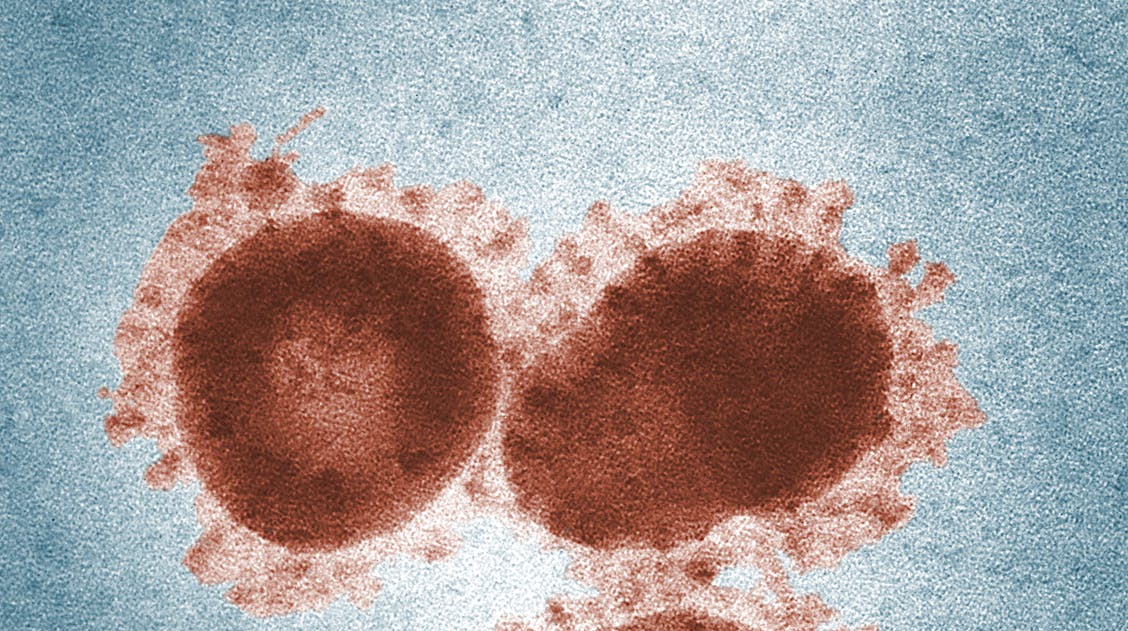
A World of Viruses – Exploring Hepatitis C
Viruses is a field that is constantly changing and evolving. They are a persistent threat to human health and require consistent and innovative research to develop new treatments to combat these viruses.
Here at MDPI, we highlight and showcase current research efforts by organizing and hosting specialized conferences where we invite esteemed speakers, which include influential scholars as well as Nobel prize-winning scientists.
Viruses 2024- A World of Viruses Conference
The recent Viruses conference, Viruses 2024- A World of Viruses, was no exception to this. We welcomed a wide range of speakers, including Dr. Charles Rice, who was awarded the Nobel Prize in Physiology or Medicine in 2020, along with Dr. Harvey James Alter and Dr. Michael Houghton.Dr. Charles Rice has an impressive portfolio of research regarding Flaviviridae. Flaviviridae are single-stranded RNA viruses, members of this subfamily include the Hepatitis C virus (HCV), Yellow Fever virus, Dengue virus, Zika virus, and West Nile virus. He has authored over 500 articles documenting his research; his most impactful work has focused on hepatitis C.
In this article, we explore HCV, detailing its discovery and how Dr. Charles Rice’s research helped to change the diagnosis and treatment of Hepatitis C.
Hepatitis C virus
Hepatitis C is an inflammation of the liver caused by the Hepatitis virus. It can be contracted through the transmission of blood from an infected person.
This can be caused by unhygienic injection practices, unsafe healthcare, unscreened blood transfusions, drug use via injection, and sexual activity.
Hepatitis C can range in severity from acute to chronic.
Acute Hepatitis C is a mild version of the disease; it describes the first 6 months after someone is exposed to HCV. It can be cleared naturally by the body without treatment.
Hepatitis C can be short-term, but more than half of those who are infected with HCV will develop a chronic infection. Chronic Hepatitis C can be a serious, long-term disease that can be life-threatening.
Furthermore, it can result in other health conditions. For example, it can cause liver damage, liver failure, cirrhosis, and liver cancer. In addition, Hepatitis C is the most common reason for liver transplantation in the US.
Diagnosis
Hepatitis C is curable in 95% of cases. Early diagnosis and treatment using direct-acting antiviral medicine can prevent further development of the disease and serious liver damage.
However, it can be difficult to diagnose as HCV can remain asymptomatic for decades after infection.
When symptoms develop, they are usually caused by serious liver damage. The symptoms of Hepatitis C can include fever, fatigue, loss of appetite, dark urine, joint pain, and jaundice.
Discovery of Hepatitis C virus
Hepatitis C has not always been recognised as a disease. Furthermore, in 1960, Hepatitis A and B were only believed to exist. The discovery of HCV started when Dr Harvey J. Alter and Dr B. Blumberg discovered the “Australian antigen” (HBsAg) from a blood sample taken from an Australian aborigine. The antigen was later identified as a surface antigen of the Hepatitis B virus (HBV).
Transfusion-associated hepatitis (TAH) was a huge problem in the 1960s. Hepatitis A and B were suspected to be the cause of TAH in blood transfusion patients.
Because of this, the HBsAg antigen was developed into a highly sensitive method to detect HBsAg in blood transfusion patients. However, in the 1970s, there was an influx of TAH patients who tested negative for HBsAg.
Researchers discovered that there was a third transmissible agent that was responsible for TAH. This was referred to as non-A and non-B hepatitis.
nAnB
The nAnB antigen was investigated for 20 years before it was finally identified as HCV by British virologist Dr. Michael J. Houghton and Dr. Harvey J. Alter in 1989.
Because of this, an assay for anti-HCV testing in donor blood was developed and introduced in 1990. This was a groundbreaking discovery that led to the further development of the assay, resulting in the near elimination of TAH.
Dr. Charles Rice was inspired by Dr. Harvey J. Alter and Dr. Michael J. Houghton’s discovery of HCV. Because of this, he began working towards the development of a vaccine for HCV.
Dr. Charles Rice’s background
Dr. Charles Rice had already made important discoveries in the field of infectious diseases and vaccine development. His graduate research focused on RNA viruses, which he further developed during his first postdoctoral position.
He deciphered the genetic code for the yellow fever virus, which led to the establishment of the flavivirus family. This resulted in the development of the vaccine for yellow fever.
He was interested in working towards the development of a HCV vaccine using the HCV clone.
However, he discovered that a crucial portion of the HCV genome, responsible for viral replication, was missing from the genome. This led him to develop a culturable version of the virus. Because of this, he was able to complete the HCV genome. Discovering the full HCV genome allowed him to study the mechanisms of HCV, including its infectious capabilities.
Hepatitis C Therapies
Because Dr. Charles Rice was able to decipher and complete the genome of HCV, he could now study the virus in greater detail, enabling more discoveries. This included identifying that multiple proteins were involved in allowing HCV entry into the liver, resulting in cellular damage and the propagation of the disease.
Dr. Charles Rice then went on to develop therapies that block HCV replication. The first of these therapies was approved for use by the U.S. Food and Drug Administration (FDA) on humans in 2013. The technology developed in these therapies laid the foundation for other scientists to further develop medications. Which, when used in combination, can cure most of those with HCV following a short course of treatment.
Dr. Charles Rice’s achievements
Dr. Charles Rice has been the recipient of many prestigious awards for his contribution to medical science, including the Nobel Prize in 2020. This includes the M.W. Beijerinck Virology Prize in 2007, the Robert Koch Prize in 2015, and the Lasker Debakey Clinical Medical Research Award in 2016.
Dr. Charles Rice’s current research
Dr. Charles Rice is still conducting important research to this day. He has published over 500 articles documenting his long and distinguished career. Here, we explore some of his most recent publications.
Investigating the efficiency and mechanism of antiviral drugs against HCV and Zika virus
In 2019, he collaborated with other researchers on an article published in Viruses, studying the efficacy and mechanism of antiviral drugs on Flaviviridae viruses, including HCV and Zika. Zika virus is a reemerging virus belonging to the Flavivirus family. It’s mostly transmitted via the bite of an infected mosquito. It can spread from mother to baby during pregnancy and result in birth defects. It currently has no viable prevention or treatment options. The researchers used a specialist method that uses fluorescent probes to detect and tag specific sequences of DNA, known as fluorescence in situ hybridization (FISH), or more specifically, bDNA FISH. The study identified that bDNA fish have a lot of power when used to investigate RNA viruses.
Investigating the efficiency and mechanism of antiviral drugs against HCV
Furthermore, in 2023, Dr. Charles Rice continued his research investigating the efficacy of direct-acting antiviral medication for the treatment of Hepatitis C. He published more of his findings in Viruses, contributing to a Special Issue dedicated to Boosting Flavivirus Research: A Pandengue Net Initiative. In this study, Dr. Charles Rice collaborated with other researchers to compare the mechanisms of direct-acting antiviral agents (DAAs) and host-targeting agents (HTAs) to gain a better understanding of how they target HCV and how to prevent drug resistance in the future.
Investigating targeted therapies for Zika Virus
In addition, Dr. Charles Rice continued this theme of investigating antiviral targets in an article published in Viruses. Here, he collaborated with a research team to unravel the genetic code for Zika virus. The researchers aimed to investigate treatment options by uncovering cellular pathways required for disease progression, which can be used to therapeutically target and treat the disease. In this study, they used specialist gene editing technology, CRISPR, to identify key genes involved with the pathogenesis of the virus. This allowed them to identify two genes as potential antiviral targets, which play important roles during the early stage of the infection.
Developing vaccines for Powassan virus (POWV)
Underpinning disease mechanisms and developing potential therapies and vaccines is a huge focal point for Dr. Charles Rice’s research. In 2023, he published a research study in Vaccines, exploring two potential vaccine candidates for the Powassan virus.
Powassan virus (POWV) is an RNA virus that belongs to the Flavivirus family. It is an emerging tick-borne virus that has become prevalent in North America and in the Russia far East. POWV can become a serious illness as it can cause infection and inflammation of the brain. It currently has no specific treatment or prevention options. In this study, Dr. Charles Rice and colleagues investigate two potential strategies to produce a live-attenuated vaccine to prevent severe POWV. The first strategy did not prove successful in the mouse model. However, the second strategy protected the mice from the disease, conferring a 70% survival rate. The researchers conclude that further research on the strategy is required to develop an effective vaccine for POWV.
Developing new therapies for Hepatitis B
Dr. Charles Rice also extends his work to DNA viruses; his current research focuses on the hepatitis B virus (HBV). Hepatitis B is a DNA virus that is extremely difficult to cultivate in the laboratory because of its unique structure. There is a vaccine that protects against HBV; however, this is not accessible to those in low- to middle-income countries who are most affected by this virus. In addition, some therapies have been developed, but unlike HCV, they can cause life-debilitating side effects.
Developing new therapies is a challenge for HBV, as it’s difficult to sequence its genome effectively. The virus’s DNA can cause a lot of distortion using the methods commonly used to study HBV. Because of this, there are still a lot of challenges to overcome to treat this virus. During the Viruses 2024- A World of Viruses conference, Charles Rice presented his current findings from his Hepatitis B research.
Summary
If you would like to read more about the topics covered at our recent Viruses 2024 -A World of Viruses conference or if you would like to publish research on the subject, please see the Viruses Special Issue here.
If you want to read about other Nobel Prize winners who have published with us, see our recent article Saving Lives with Economics—Nobel Prize Winner Alvin E. Roth.










